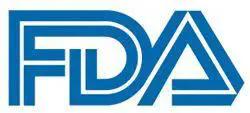News
Article
FDA Approves Subcutaneous Daratumumab Plus VRd in Multiple Myeloma
Author(s):
The FDA approved Darzalex Faspro plus VRd for induction and consolidation in select patients with newly diagnosed multiple myeloma.
FDA

The FDA has approved daratumumab and hyaluronidase-fihj (Darzalex Faspro) in combination with bortezomib (Velcade), lenalidomide (Revlimid), and dexamethasone (Darzalex Faspro-VRd) for induction and consolidation in patients with newly diagnosed multiple myeloma who are candidates for autologous stem cell transplant.1,2
The decision is supported by findings from the phase 3 PERSEUS trial (NCT03710603) in which the Darzalex Faspro-VRd regimen (n = 355) significantly improved progression-free survival (PFS) vs VRd alone (n = 354), with a hazard ratio of 0.40 (95% CI, 0.29-0.57; P < .0001). The median PFS was not yet reached in either treatment arm,1 and prespecified subgroup analyses demonstrated a comparable benefit with D-VRd across clinically relevant subgroups, including patients with International Staging System stage III disease and those with high cytogenetic risk.3
Regarding safety, the most common toxicities experienced by 20% or more of patients who received Darzalex Faspro-VRd included peripheral neuropathy, fatigue, edema, pyrexia, upper respiratory infection, constipation, diarrhea, musculoskeletal pain, insomnia, and rash.1
"Multiple myeloma has a highly varied clinical course among patients and in each individual patient, and there is a continued need for innovation and therapies that employ different targets and combinations to provide patients with treatment options at diagnosis and throughout the course of their disease," Amrita Y. Krishnan, MD, professor and director of the Judy and Bernard Briskin Multiple Myeloma Center, City of Hope, said in a news release.2 "The efficacy data supporting this new quadruplet regimen, combined with its established safety and tolerability profile, provide compelling evidence that adding D-VRd upon initial diagnosis as compared to VRd can deepen responses and prolong remissions in the context of autologous stem cell transplantation."
The phase 3 PERSEUS trial enrolled patients between 18 and 70 years of age with newly diagnosed multiple myeloma who were eligible for ASCT. An ECOG performance status of 0 to 2 was also required.3
Patients were randomly assigned 1:1 to the D-VRd and VRd arms, where treatment was given in 28-day cycles. Patients in both arms underwent ASCT at the end of induction therapy. In the experimental arm, 4 cycles of induction therapy consisted of 1800 mg of subcutaneous daratumumab given once weekly in cycles 1 and 2, then once every 2 weeks in cycles 3 and 4; 1.3 mg/m2 of subcutaneous bortezomib on days 1, 4, 8, and 11 of each cycle; 25 mg of oral lenalidomide per day on days 1 to 21 of each cycle; and 40 mg of oral or intravenous dexamethasone on days 1 to 4 and 9 to 12 of each cycle. Two cycles of consolidation therapy included 1800 mg of daratumumab once every 2 weeks plus the same dosing regimen of VRd. During maintenance, 1800 mg of daratumumab was given once every 4 weeks in combination with 10 mg of lenalidomide per day.
The primary end point was PFS. Key secondary end points were a complete response or better and minimal residual disease (MRD)–negative status.
Findings from the trial, which had previously been published in the New England Journal of Medicine with a median follow-up of 47.5 months (range, 0-54.4) demonstrated that the estimated 48-month PFS rate was 84.3% (95% CI, 79.5%-88.1%) in the D-VRd group and 67.7% (95% CI, 62.2%-72.6%) in the VRd group.
Regarding response the percentage of patients with a complete response or better was higher in the D-VRd group than in the VRd group, at 87.9% vs 70.1%, respectively (P <.001). More patients in the experimental arm also experienced MRD negativity compared with those in the VRd arm, at 75.2% vs 47.5%, respectively (P <.001).
Additional findings presented at the 2024 ASCO Annual Meeting showed that 47.3% of patients treated in the D-VRd arm (n = 355) experienced MRD negativity at a 10-6 sensitivity for 12 months or more compared with 18.6% of patients in the VRd arm (n = 354). At a 10-5 sensitivity, these rates were 64.8% and 29.7%, respectively. Additionally, MRD negativity at a 10-6 sensitivity was sustained for at least 18 months in 42.0% of patients given D-VRd vs 15.0% of those treated with VRd. At a 10-5 sensitivity, these respective rates were 59.4% and 25.1%.4
"This latest indication for Darzalex Faspro-based quadruplet therapy demonstrated a clinically significant reduction in disease progression or death during first-line treatment when patients are likely to experience their deepest responses," Jordan Schecter, MD, vice president, Disease Area Leader, Multiple Myeloma, Johnson & Johnson, added in the news release.2 "Today's approval embodies our commitment to setting new standards of care for patients newly diagnosed with multiple myeloma who are transplant eligible."
References
- FDA approves daratumumab and hyaluronidase-fihj with bortezomib, lenalidomide, and dexamethasone for multiple myeloma. FDA. July 30, 2024. Accessed July 30, 2024. https://www.fda.gov/drugs/resources-information-approved-drugs/fda-approves-daratumumab-and-hyaluronidase-fihj-bortezomib-lenalidomide-and-dexamethasone-multiple
- Darzalex Faspro (daratumumab and hyaluronidase-fihj)-based quadruplet regimen approved in the U.S. for patients with newly diagnosed multiple myeloma who are transplant-eligible. News release. Johnson & Johnson. July 30, 2024. Accessed July 30, 2024. https://www.investor.jnj.com/news/news-details/2024/DARZALEX-FASPRO-daratumumab-and-hyaluronidase-fihj-based-quadruplet-regimen-approved-in-the-U.S.-for-patients-with-newly-diagnosed-multiple-myeloma-who-are-transplant-eligible/default.aspx
- Sonneveld P, Dimopoulos MA, Boccadoro M, et al. Daratumumab, bortezomib, lenalidomide, and dexamethasone for multiple myeloma. N Engl J Med. 2024;390(4):301-313. doi:10.1056/NEJMoa2312054
- Rodriguez-Otero P, Moreau P, Dimopoulos MA, et al. Daratumumab (DARA) + bortezomib/lenalidomide/dexamethasone (VRd) in transplant-eligible (TE) patients (pts) with newly diagnosed multiple myeloma (NDMM): Analysis of minimal residual disease (MRD) in the PERSEUS trial. J Clin Oncol. 2024;42(suppl 16):7502. doi:10.1200/JCO.2024.42.16_suppl.7502









